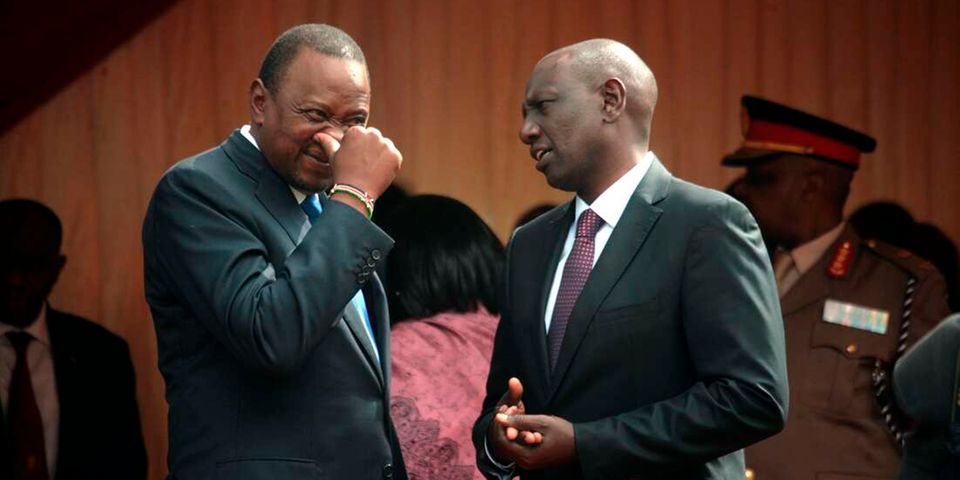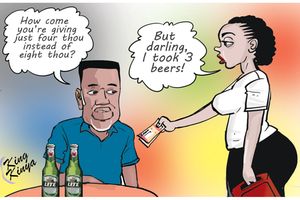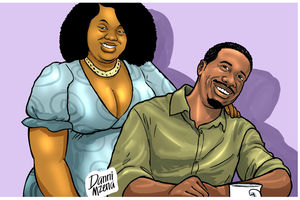Uhuru Kenyatta’s dilemma after falling out with Ruto

President Uhuru Kenyatta and his deputy William Ruto. File | Evans Habil | Nation Media Group
What you need to know:
- Unlike his predecessor, President Kibaki, President Kenyatta publicly campaigned against his deputy in the 2022 elections as he backed Azimio presidential candidate Raila Odinga
In 2002, President Uhuru Kenyatta’s mentor, President Daniel Moi, found himself in a position where he had to hand over power to his former Vice-President Mwai Kibaki, whom he had opposed in the elections.
Exactly two decades later, President Kenyatta finds himself in a similar position, where he has to hand over power to his deputy William Ruto, whom he sought to block from succeeding him.
Unlike his predecessor, President Kibaki, President Kenyatta publicly campaigned against his deputy in the 2022 elections as he backed Azimio presidential candidate Raila Odinga.
President Kenyatta was actively involved in his succession campaigning against his deputy, a man he formed a deadly political force with in the lead-up to the March 2013 elections as they faced crimes against humanity cases at the International Criminal Court.
In the first Kenyan presidential election to include a joint-ticket, the Jubilee Alliance romped to victory with President Kenyatta garnering 6.17 million votes while Mr Odinga got 5.34 million votes. Donning matching attire and running the country almost as co-presidents, President Kenyatta and Dr Ruto seemed like a match made in heaven.
Bromance fizzled
The political bromance, however, fizzled after the 2017 elections following the newfound political truce between President Kenyatta and Mr Odinga marked by the famous March 9, 2018 handshake.
What followed was simmering tension between the erstwhile political friends, with Dr Ruto complaining of being sidelined by his boss.
The acrimony escalated into a public war of words. At the centre of the verbal confrontations were succession politics, performance of the Jubilee government and alleged betrayal from both camps.
Even attempts by the clergy to broker a truce between the two leaders hit a dead end.
In 2020, President Kenyatta would officially break ranks with Dr Ruto, who went ahead to form UDA.
In continued escalation of the bitter fallout between the political friends-turned foes, President Kenyatta would urge voters not to be hoodwinked by “sweet-talking politicians” but critically assess those seeking leadership positions in the August polls.
“When they see good roads they stand and say, ‘you can see what our government has done’, but when things are not good they point at others ... Now I wonder, how many governments do we have?” he asked in a thinly veiled reference to Dr Ruto.
Stay away from his succession
The UDA leader would waste no time responding, also reminding the President that he is occupying the seat of power courtesy of his support. He would also ask his boss to stay away from his succession and let him battle it out with Mr Odinga.
Dr Ruto would blame the association between President Kenyatta and Mr Odinga for the missed opportunities to fulfil the pre-election pledges Jubilee had made.
This was against the President’s assertion that the unity and peace brought about by the handshake provided an enabling environment for his government to accomplish more development projects compared to his first term.
The President, who campaigned while launching projects, would go ham on his deputy, saying unequivocally that he would not hand over the reins of the country to “thieves”.
President Kenyatta portrayed the picture of a man keen to control his succession. But in the end, his deputy would outsmart him, ascending to the throne of the country as the fifth president after clearing the last hurdle in the Supreme Court, where his election was unanimously upheld.





